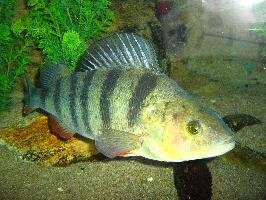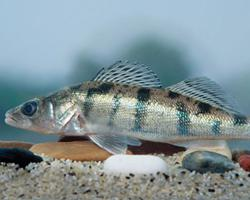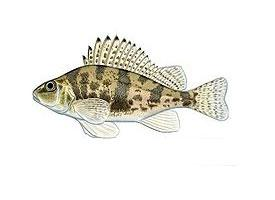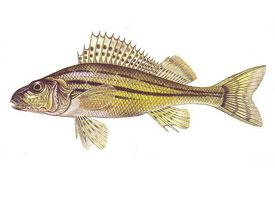
Váhy a míry
| Délka | 50 cm |
|---|---|
| Hmotnost | 4,750 kg |
Popis zvířete
The European perch, scientifically known as Perca fluviatilis, is a captivating species of freshwater fish belonging to the family Percidae. Widely distributed across Europe and parts of Asia, this species is renowned for its striking appearance and adaptability to various aquatic environments. It thrives in rivers, lakes, and reservoirs, displaying a remarkable resilience to different water conditions, though it prefers habitats with clear water and abundant vegetation.Physical Description:
The European perch is easily recognizable by its robust, elongated body that tapers towards a pointed tail, enabling swift and agile movements in the water. It typically grows to a length of 20-30 cm, although specimens exceeding 50 cm have been recorded, showcasing the species' potential for significant growth under optimal conditions. The skin is adorned with distinctive dark vertical bars that contrast sharply against a greenish or yellowish background, serving as effective camouflage among aquatic plants. The dorsal fin is split into two distinct parts, with the anterior portion containing sharp spines that deter predators, and the posterior part being soft-rayed, facilitating quick maneuvers. The anal and pelvic fins are positioned towards the underside, further enhancing its streamlined shape for efficient swimming.
Behavior and Diet:
European perch are predatory fish with a diet that primarily consists of smaller fish, crustaceans, and various aquatic invertebrates. Juveniles tend to feed on zooplankton and gradually shift to larger prey as they grow. They exhibit schooling behavior, especially during their juvenile stage, which offers protection from predators and increases their efficiency in hunting. Adults, however, can become more solitary or form smaller groups. Their hunting strategy involves lying in wait among vegetation or other structures, striking swiftly at unsuspecting prey that ventures too close.
Reproduction:
The reproductive season of the European perch occurs in the spring when water temperatures rise to around 6-12°C. Spawning takes place in shallow, vegetated areas of lakes and rivers, where females release long strands of eggs that adhere to aquatic plants. These egg strands can contain tens of thousands of eggs, reflecting the species' high fecundity. Males typically arrive first at the spawning grounds and wait for females to deposit their eggs, which they then fertilize. The eggs hatch after 10-30 days, depending on water temperature, with the larvae initially feeding on their yolk sac before transitioning to external food sources.
Conservation Status:
The European perch is considered to be of least concern by the International Union for Conservation of Nature (IUCN), owing to its wide distribution and large populations. However, local populations can be affected by pollution, habitat destruction, and the introduction of non-native species. Efforts to maintain clean and healthy aquatic ecosystems are crucial for the continued thriving of this species.
Cultural and Economic Importance:
Beyond its ecological role, the European perch holds significant cultural and economic value. It is a popular target for recreational anglers due to its fighting spirit and the quality of its white, flaky flesh, which is highly regarded in culinary circles. In some regions, it is also commercially farmed or harvested from the wild for food, contributing to local economies and traditions.
In conclusion, the European perch, with its striking appearance, fascinating behavior, and ecological significance, is a jewel of freshwater ecosystems across Europe and parts of Asia. Its presence enriches the biodiversity
Podobná zvířata
Nové fotografie zvířat
Top 10 zvířat
- Common cockchafer (Melolontha melolontha)
- Hooded merganser (Lophodytes cucullatus)
- Common house mosquito (Culex pipiens)
- Colossal squid (Mesonychoteuthis hamiltoni)
- Giant house spider (Eratigena atrica)
- Fruit fly (Drosophila melanogaster)
- Australian box jelly (Chironex fleckeri)
- Common reed warbler (Acrocephalus scirpaceus)
- Harpy eagle (Harpia harpyja)
- Moustached guenon (Cercopithecus cephus)


